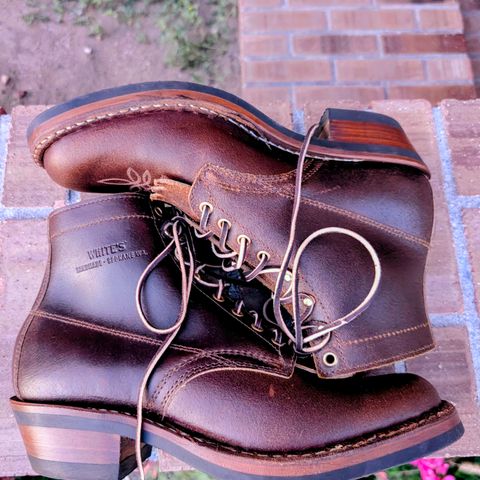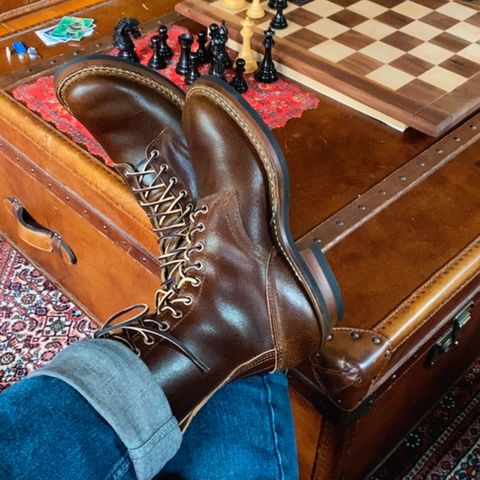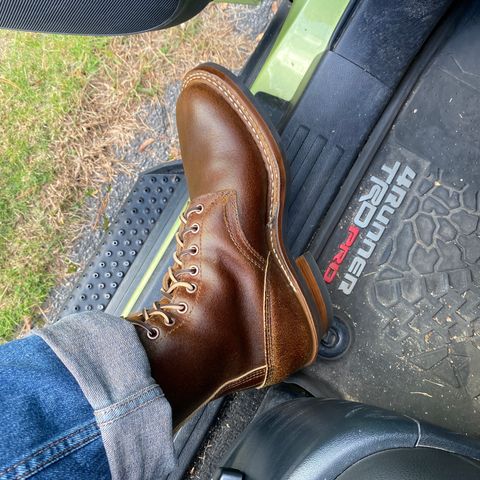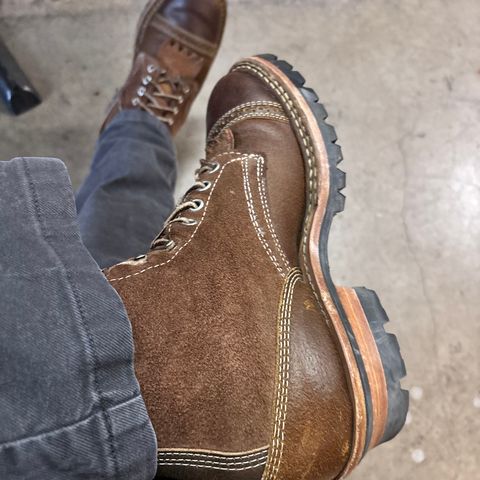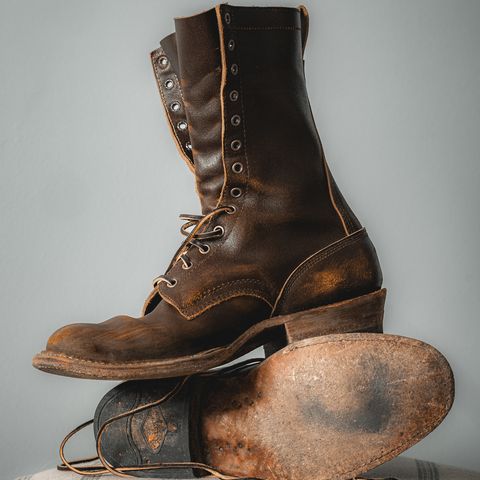About
Horween Cinnamon Waxed Flesh represents one of the most appealing color variations in Horween's renowned waxed flesh leather collection. This distinctive leather combines the technical excellence of Horween Waxed Flesh with a warm, medium-brown coloration that evokes the rich tones of cinnamon spice. The result is a versatile leather that bridges the gap between rugged functionality and refined aesthetic appeal.
About
Horween Cinnamon Waxed Flesh represents one of the most appealing color variations in Horween's renowned waxed flesh leather collection. This distinctive leather combines the technical excellence of Horween Waxed Flesh with a warm, medium-brown coloration that evokes the rich tones of cinnamon spice. The result is a versatile leather that bridges the gap between rugged functionality and refined aesthetic appeal.
Color Characteristics
The cinnamon coloration in this waxed flesh leather presents a sophisticated blend of reddish-brown undertones with golden highlights that become particularly pronounced under natural lighting conditions. When new, the leather displays a deep, rich appearance enhanced by the characteristic wax finish that creates a subtle sheen across the flesh-side surface.
Unlike uniform industrial dyeing processes, the hand-dyeing techniques employed by Horween Leather Company result in slight color variations that make each piece unique. This natural variation adds to the leather's character and ensures that no two items crafted from cinnamon waxed flesh will be identical in their color presentation.
The warm undertones of cinnamon make this leather particularly appealing for applications where visual warmth is desired without sacrificing the professional appearance that quality leather goods demand. The color strikes an ideal balance between the earthiness of traditional brown leathers and the sophistication required for contemporary leather applications.
Manufacturing Process
Cinnamon waxed flesh follows the same fundamental manufacturing process as all Horween waxed flesh leathers, beginning with the company's renowned Chromexcel base material. The leather undergoes the traditional hot stuffing and vegetable re-tanning processes that give Chromexcel its distinctive properties before receiving the specialized waxed flesh treatment.
The cinnamon dye is applied to the flesh side using Horween's proprietary hand-dyeing procedures, which have been refined over generations of leather crafting. This process requires significant skill and experience to achieve consistent color depth while maintaining the natural characteristics of the leather surface.
Following the dyeing process, the flesh side undergoes hand-glazing to provide the tight flesh surface and final luster that distinguishes quality waxed flesh leather. This glazing process is particularly important for cinnamon coloring, as it helps lock in the color while preparing the surface for the final wax treatment that gives the leather its distinctive protective properties.
Patina Development
One of the most compelling aspects of cinnamon waxed flesh is its distinctive patina development characteristics. As the protective wax coating gradually wears away through use and handling, the leather reveals lighter sand and tan tones beneath the initial cinnamon surface. This creates an appealing contrast between worn areas that display these lighter tones and unworn sections that maintain the deep cinnamon coloration.
The patina develops gradually rather than dramatically, showing subtle color shifts that enhance the leather's character without completely transforming its appearance. Scuffs and wear marks tend to lighten rather than darken, creating an attractive weathered look that many users find more appealing than the original finish.
This aging process is particularly forgiving with cinnamon coloring, as the warm brown tones blend naturally with the underlying leather colors that emerge through wear. The result is a patina that looks intentional and sophisticated rather than simply worn or damaged.
Commercial Applications
Cinnamon waxed flesh has found particular favor in heritage and workwear-inspired boot designs, where its warm brown tones complement the rugged aesthetic while providing the durability required for demanding applications. The color's versatility makes it equally suitable for casual and semi-formal footwear, allowing manufacturers to create boots that work in multiple contexts.
The leather is commonly used in unlined boot constructions, where the flesh side provides comfortable contact with the wearer's foot while the cinnamon coloring adds visual interest. This application takes advantage of both the technical properties of waxed flesh and the aesthetic appeal of the cinnamon tone.
Beyond footwear, cinnamon waxed flesh appears in leather goods where warm brown tones are desired. Bags, belts, and accessories crafted from this leather benefit from both its durability and its appealing color that complements a wide range of materials and finishes.
Care and Maintenance
Initial care for cinnamon waxed flesh requires minimal intervention due to the protective wax treatment that shields the leather from environmental damage. The wax coating provides natural protection against water and staining while the leather gradually adapts to use patterns.
As the patina develops and the underlying nap begins to show through the wax coating, gentle brushing with a horsehair brush helps maintain the texture and appearance of the developing surface. The cinnamon coloring responds well to neutral leather conditioners that won't alter the warm brown tones.
Regular cleaning with a damp cloth maintains the developing patina appearance without interfering with the natural aging process. For additional protection in high-wear areas, occasional application of wax-based leather protectants can help preserve the leather's integrity while allowing the patina to continue developing naturally.
Styling and Compatibility
The warm undertones of cinnamon waxed flesh make it exceptionally compatible with earth-toned clothing, denim, and casual wool garments. The color particularly shines in autumn and winter wardrobes, where its rich brown tones complement seasonal color palettes.
This versatility extends to both rugged outdoor applications and refined casual styling contexts. The leather's ability to develop character through use enhances rather than detracts from overall appearance, making it an excellent choice for items that will see regular use.
The cinnamon coloring works well in both matte finishes that emphasize texture and semi-gloss finishes that highlight the color depth, depending on the care routine and intended application. This flexibility allows craftspeople to achieve different aesthetic effects while working with the same base leather.
References
Research conducted September 6, 2025, utilizing 8 professional sources including official Horween documentation, industry publications, and expert analysis. All sources verified against editorial guidelines for credibility and banned domain compliance.
